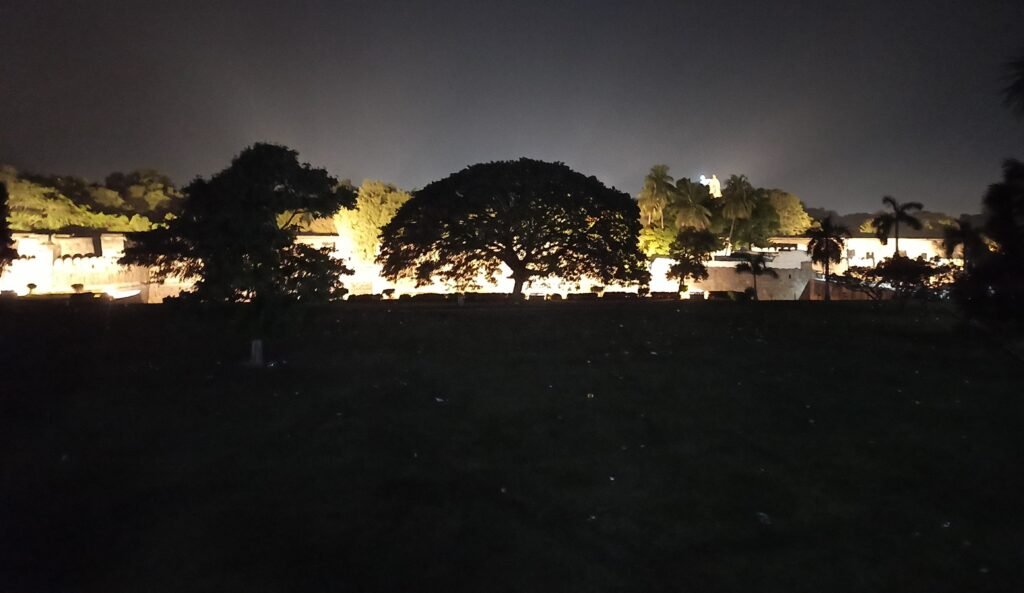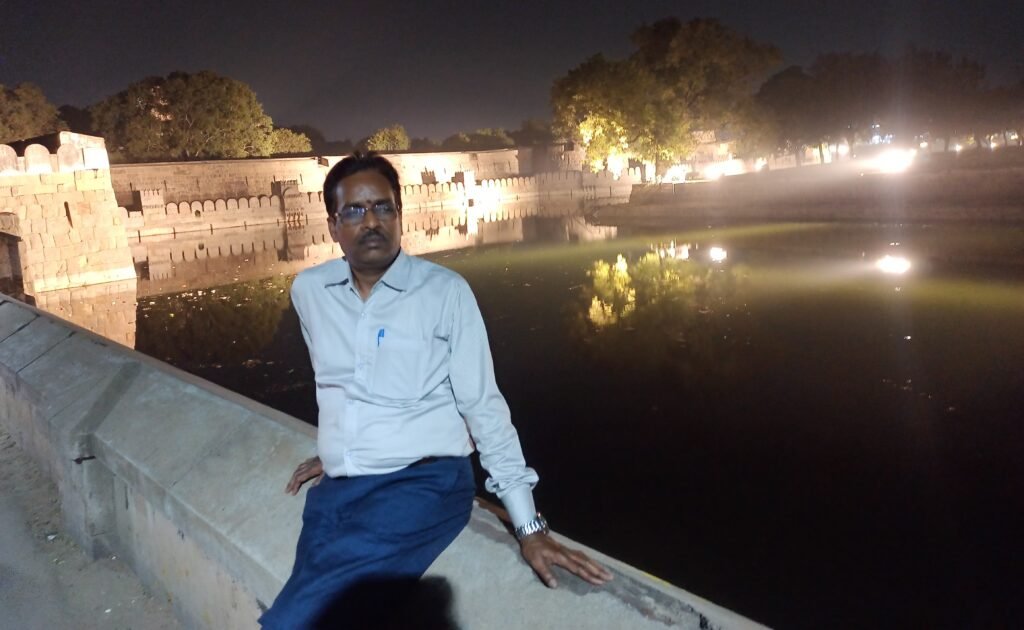
A Journey to Vellore Fort: Exploring History, Culture, and the Magnificent Jalakanteshwar Temple
Hey there, fellow travelers and history buffs! If you’re looking for a destination that blends architectural grandeur, rich history, and a touch of spirituality, let me take you on a virtual trip to Vellore Fort in Tamil Nadu. Nestled in the heart of Vellore city, this 16th-century fortress is a hidden gem that’s stood the test of time. And guess what? Inside its massive granite walls lies the stunning Jalakanteshwar Temple, a masterpiece that’ll leave you in awe. Ready to dive in? Let’s go!
Contents
ToggleWhat Makes Vellore Fort Special?
Picture this: a massive fort sprawled across 133 acres, surrounded by a wide moat that once teemed with crocodiles (yes, crocodiles!). Built in the 16th century by the Vijayanagara Empire, Vellore Fort is a testament to South India’s military architecture. The granite walls, towering ramparts, and intricate carvings scream craftsmanship that’s hard to match even today.
What’s really cool is that this fort isn’t just a single-story structure—it’s a living history book. Over the centuries, it passed through the hands of the Bijapur Sultans, Marathas, Carnatic Nawabs, and finally the British, who held it until India’s independence. Today, it’s lovingly maintained by the Archaeological Survey of India (ASI), and it’s open for us to explore. Inside, you’ll find a mix of a temple, a mosque, a church, and even a museum—talk about diversity under one roof!

The Jalakanteshwar Temple: A Spiritual Treasure Inside the Fort
Now, let’s step inside the fort and talk about its crown jewel—the Jalakanteshwar Temple. Dedicated to Lord Shiva, this temple is a stunning example of Vijayanagara architecture. The story behind it is pretty fascinating too. Legend has it that a Vijayanagara chieftain, Chinna Bommi Reddi, had a dream where Lord Shiva asked him to build a temple over a Shiva Lingam hidden under an ant-hill surrounded by water. And so, in 1550 CE, he did just that, naming it “Jalakanteshwarar”—the Lord residing in water.
The temple’s gopuram (tower) is over 100 feet tall, adorned with exquisite carvings that’ll make you stop and stare. The mandapam (hall) inside has stone pillars carved with mythical creatures and deities—it’s like walking into an ancient art gallery. There’s even a water tank surrounding the temple, adding to its serene vibe. Fun fact: there’s a revolving lamp inside that some say spins when you place your hands on it and make a wish. Whether it’s divine magic or just a cool trick, it’s worth a try!
The temple’s history has its share of drama too. It was abandoned for nearly 400 years after Muslim invasions, used as an arsenal, and only restored in 1981 when the deity was secretly reinstalled. Today, it’s a peaceful spot for worship and reflection, open from 6:30 AM to 1:00 PM and 5:00 PM to 8:30 PM. If you’re there during festivals like Mahashivratri or Navratri, you’re in for a treat with all the decorations and celebrations.

How to Reach Vellore Fort from Anywhere in India
Getting to Vellore Fort is easier than you might think, no matter where you’re starting from in India. Vellore is super well-connected by air, rail, and road. Here’s the breakdown:
- By Air: The closest airport is Vellore Airport, but it’s small and mostly handles chartered flights. For major connections, head to Chennai International Airport (135 km away) or Bengaluru International Airport (210 km away). From there, you can rent a cab or hop on a bus to Vellore—it’s about a 2.5- to 4-hour drive depending on traffic.you can use make my trip or goibibo for booking your air ticket and hotels
- By Train: Katpadi Junction, just 7 km from the fort, is the main railway hub in Vellore. It’s connected to big cities like Chennai, Bengaluru, Mumbai, Delhi, and more. Superfast trains stop here, so check IRCTC for schedules. Once you arrive, a quick auto-rickshaw ride (around ₹80) or a local bus will drop you at the fort.
- By Road: Vellore’s on the Chennai-Bengaluru highway, making it a breeze to reach by car or bus. From Chennai (135 km), Bengaluru (210 km), Tirupati (125 km), or Pondicherry (156 km), state-run and private buses run regularly. If you’re driving, the roads are decent, and the fort’s right in the city center—hard to miss!
Once you’re in Vellore, the fort is just 1.5 km from the town railway station or old bus stand. You can walk if you’re up for it, or grab an auto for a short ride.
The Historical Importance of Vellore Fort
Vellore Fort isn’t just a pretty face—it’s played a starring role in India’s history. Built by Channa Bommi Nayaka and Thimma Reddy Nayaka under Vijayanagara rule, it started as a military stronghold. But its real claim to fame came in 1806 with the Vellore Mutiny—the first significant rebellion against British rule in India. Indian sepoys stationed here rose up, and though it was quelled, it sent shockwaves through the British Empire.
The fort also served as a prison for some big names. After the fall of Tipu Sultan, his family was held captive here by the British. Even Sri Vikrama Rajasinha, the last king of Sri Lanka, spent his final days within these walls. Walking around, you can almost feel the weight of those stories etched into the stone.

Guidelines for Visiting Vellore Fort
To make your visit smooth and enjoyable, here are some handy guidelines:
- Timings: The fort is open from 8:00 AM to 6:00 PM. The museum inside runs from 9:00 AM to 12:30 PM and 2:00 PM to 5:00 PM (closed on public holidays). Jalakanteshwar Temple hours are 6:30 AM–1:00 PM and 5:00 PM–8:30 PM.
- Entry Fee: Just ₹5 per person—super affordable! That includes access to the museum and religious sites.
- Dress Code: For the temple, modest clothing is a must—cover your shoulders and knees. No strict rules for the fort itself, but comfortable shoes are a good idea since there’s a lot of walking.
- Photography: Cameras are welcome, but no flashes inside the temple or museum. Some areas might restrict mobile use, so keep an eye out for signs.
- Safety Tips: Watch out for monkeys—they’re around and can get grabby with food or shiny stuff. Also, the fort’s a 3-km walk around, so avoid midday heat if you can.
- Essentials: Carry water and snacks—there aren’t many food stalls inside. Parking’s tricky, so arrive early if you’re driving.
Final Thoughts: Why You Should Visit
Vellore Fort isn’t just a destination—it’s an experience. Whether you’re a history nerd marveling at its past, an architecture lover gawking at the Jalakanteshwar Temple’s carvings, or just someone seeking a peaceful escape, this place has something for you. It’s a rare spot where you can see a temple, mosque, and church coexist, reflecting India’s incredible diversity.
So, pack your bags, plan your route, and head to Vellore. Trust me, standing in the shadow of those ancient walls, you’ll feel a connection to centuries gone by. Have you been to Vellore Fort? Drop your thoughts below—I’d love to hear your stories!
if you intrested to visit most religious temple of Tirupati Balaji Venkateshwar swami temple in tTamil Nadu you should must plan one or two extra day to visit here just about 100 kilometer from Villore fort.
here you go! A blog post that’s casual, informative, and ready to inspire your readers. Let me know if you’d like any tweaks!
Villore Fort - FAQs
1. Where is Villore Fort located?
Villore Fort, also known as Vellore Fort, is located in Vellore, Tamil Nadu, India.
2. What is the historical significance of Villore Fort?
Villore Fort is a significant historical site known for its impressive architecture and rich history. It was built by the Vijayanagara Empire in the 16th century and later controlled by various rulers, including the Bijapur Sultanate, the Marathas, and the British.
3. What are the main attractions inside Villore Fort?
Among the main points of interest within the fort are:
- The Jalakandeswarar Temple, a beautiful Dravidian-style temple.
- St. John’s Church, one of the oldest churches in South India.
- A mosque built during the rule of the Bijapur Sultanate.
- The fort’s massive moat and thick stone walls.
4. What is unique about Villore Fort’s architecture?
Villore Fort is famous for its robust granite walls and a deep moat that once housed crocodiles. The fort showcases a blend of Dravidian, Islamic, and European architectural influences, reflecting the diverse rulers who controlled it over time.
5. Can visitors explore the entire fort?
Yes, visitors can explore most parts of the fort, including the temples, mosque, church, and outer walls. Some areas might have restricted access due to preservation efforts.
6. What are the visiting hours and entry fees?
The fort is open to visitors daily from 8:00 AM to 6:00 PM. The entry fee is usually nominal, and some parts, like the temple, have free entry.
7. How can I reach Villore Fort?
Villore Fort is well-connected by road and rail. The nearest railway station is Vellore Cantonment, and the closest major airport is in Chennai, approximately 130 km away.
8. Is there any historical event associated with the fort?
Yes, Villore Fort was the site of the Vellore Mutiny in 1806, one of the first major revolts against British rule in India.
9. Are there any accommodations near the fort?
Yes, Vellore city offers various accommodation options, ranging from budget hotels to luxury stays.
10. What is the best time to visit Villore Fort?
The best time to visit is during the winter months (November to February) when the weather is pleasant for sightseeing.
Would you like any additional information about Villore Fort? 😊